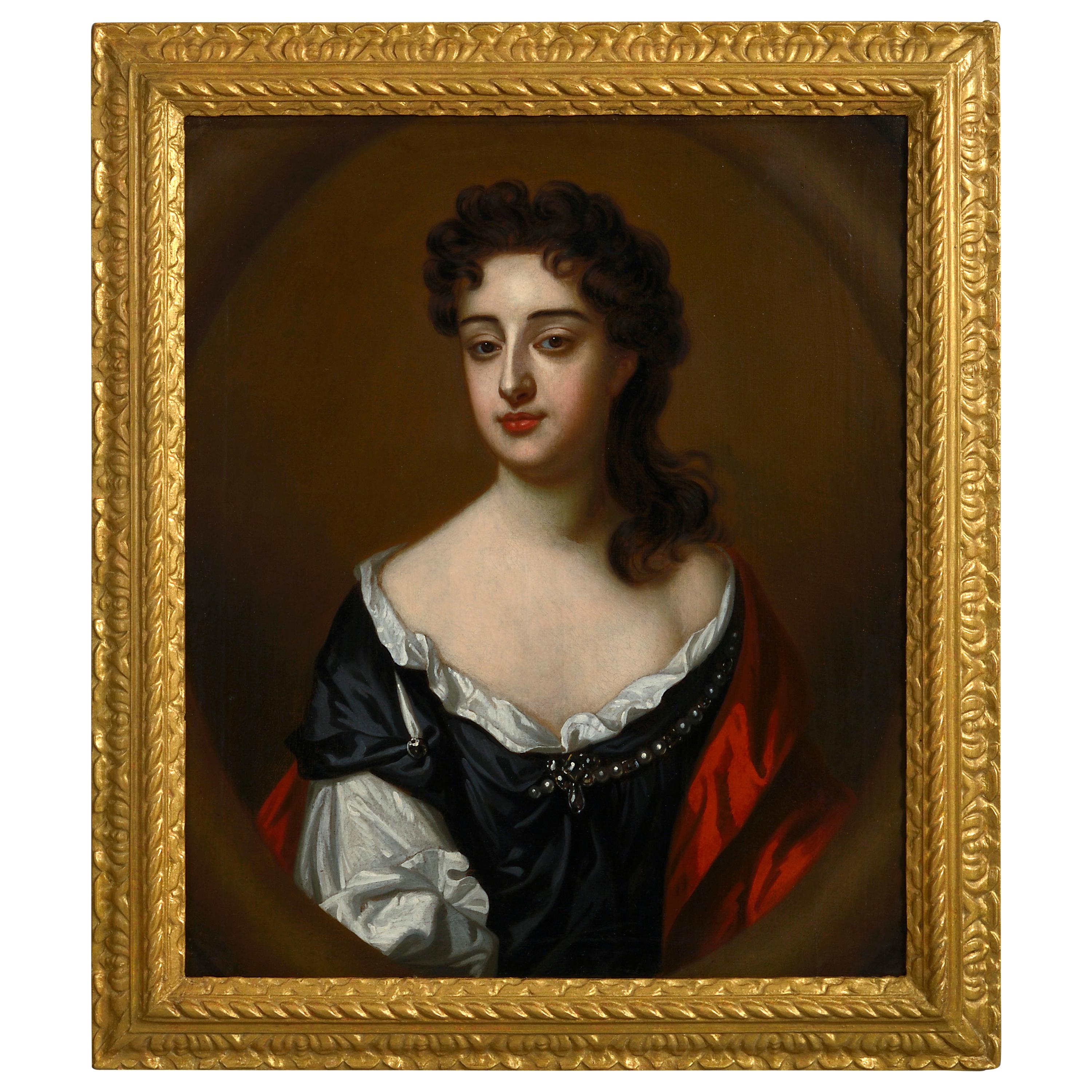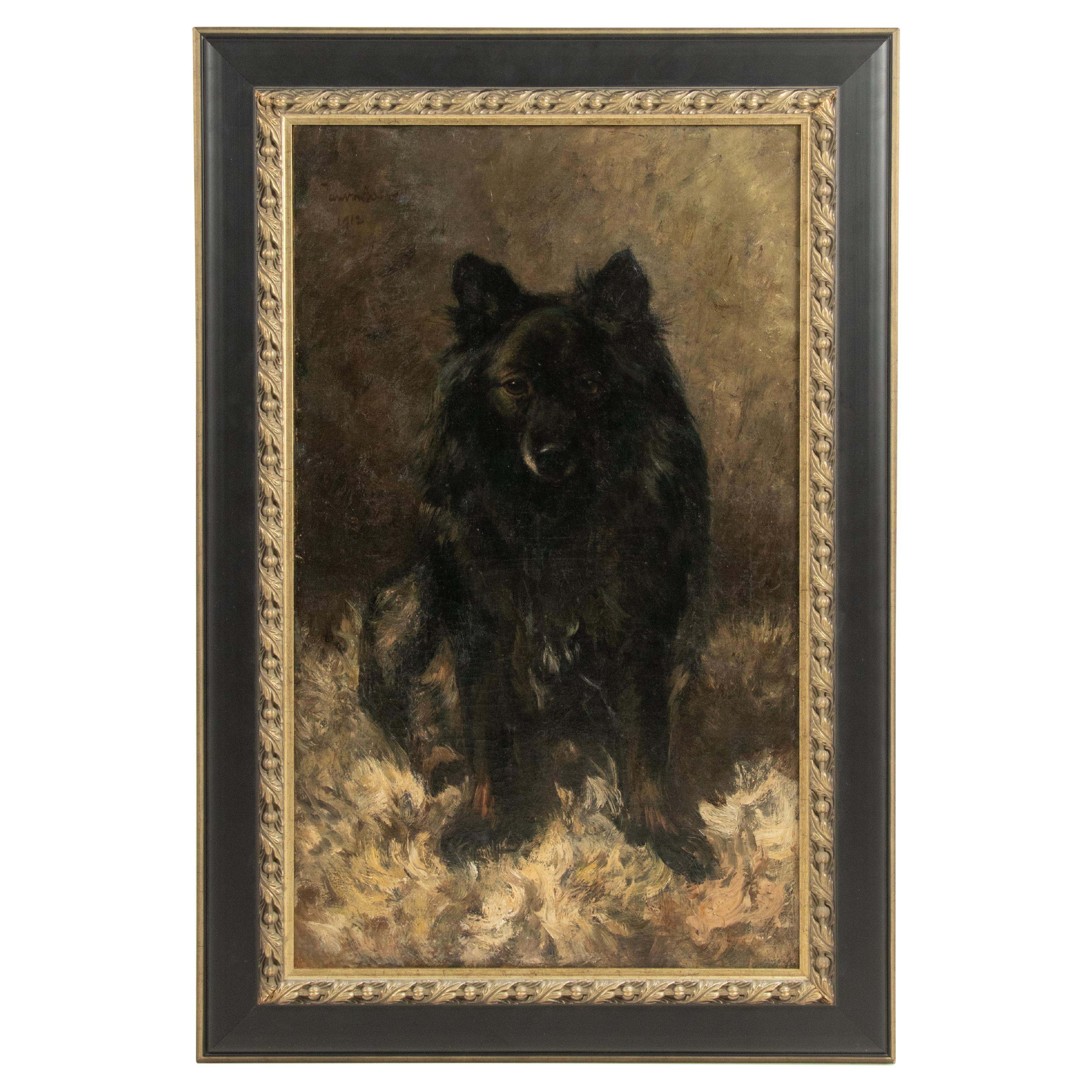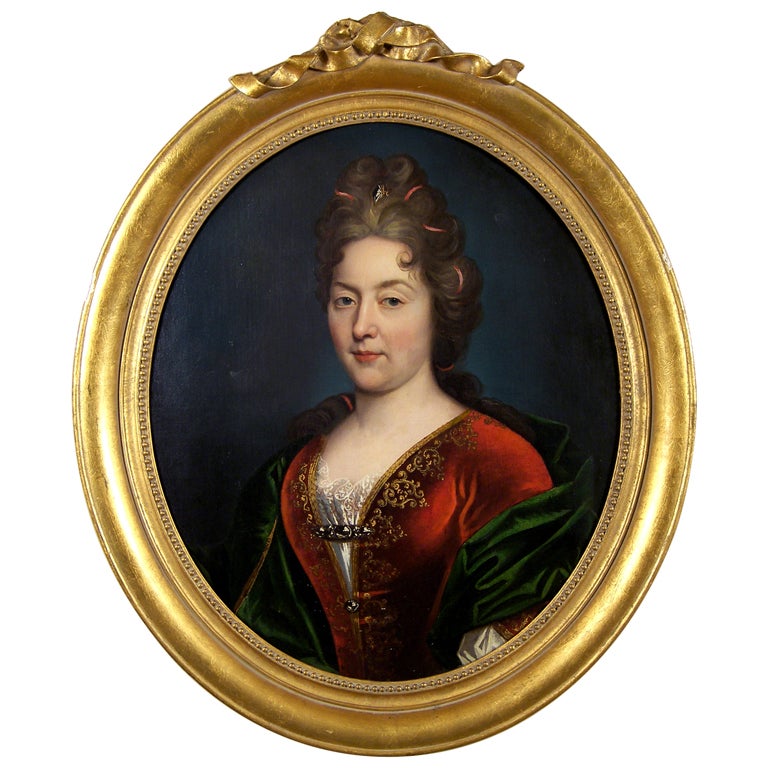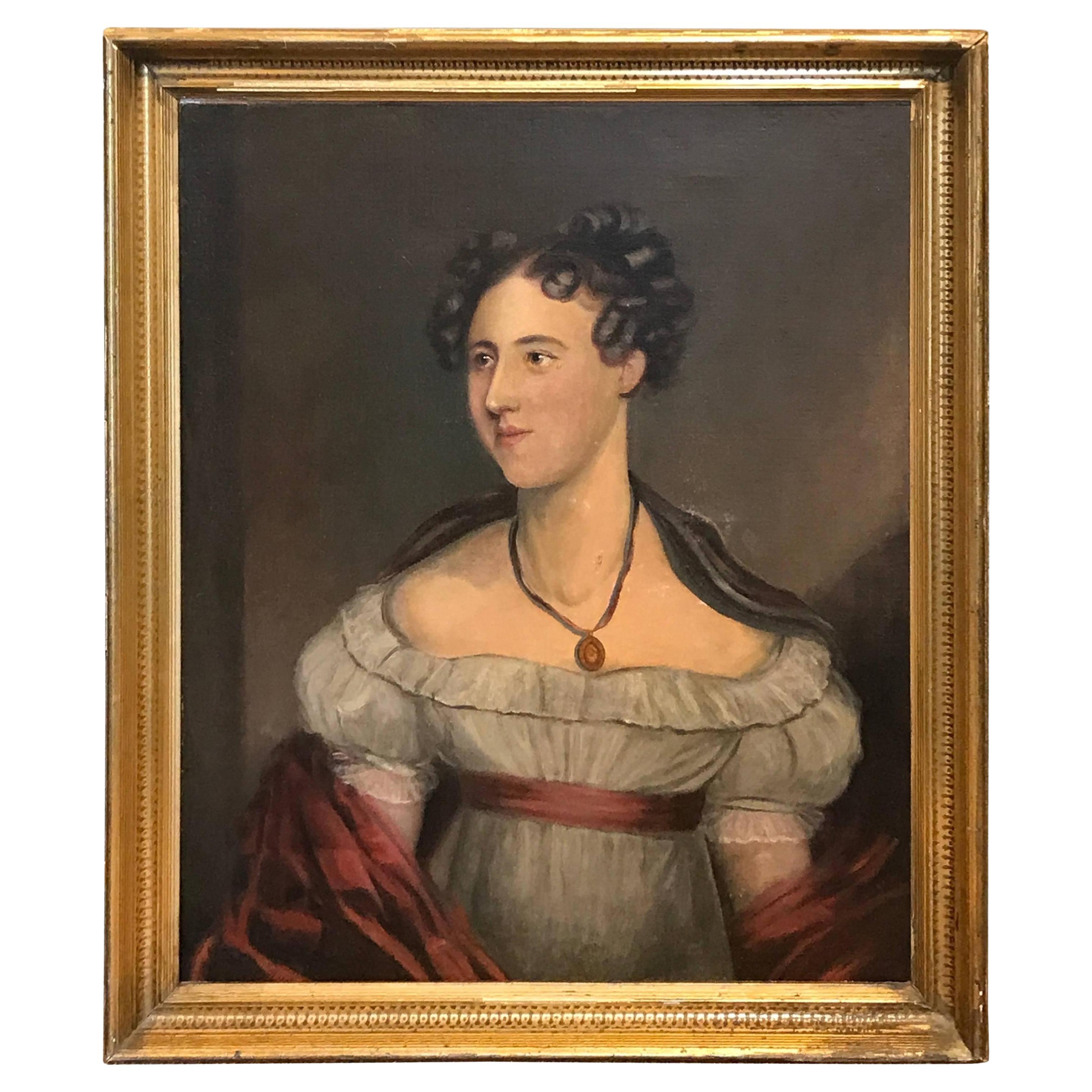Items Similar to Jan van de Vaart Portrait of a Lady
Want more images or videos?
Request additional images or videos from the seller
1 of 5
Jan van de Vaart Portrait of a Lady
About the Item
Jan van de Vaart was a Dutch painter and draughtsman of portraits, landscapes, still life's, and trompe-lioeil paintings, and a mezzotint artist who was active in England for most of his career - he moved to England in 1674. He was also an art restorer and art collector.
- Dimensions:Height: 57.29 in (145.5 cm)Width: 48.82 in (124 cm)Depth: 0.04 in (1 mm)
- Materials and Techniques:
- Place of Origin:
- Period:
- Date of Manufacture:17th Century
- Condition:Wear consistent with age and use.
- Seller Location:Lincoln, GB
- Reference Number:1stDibs: LU3794318177712
About the Seller
3.0
Vetted Seller
These experienced sellers undergo a comprehensive evaluation by our team of in-house experts.
1stDibs seller since 2018
8 sales on 1stDibs
Typical response time: 4 hours
- ShippingRetrieving quote...Ships From: Lincoln, United Kingdom
- Return PolicyA return for this item may be initiated within 3 days of delivery.
More From This SellerView All
- Samuel David Colkett A Norfolk LandscapeLocated in Lincoln, GBSamuel David Colkett (1806-1863) A Norfolk landscape Oil on canvas. Size: 53 x 63cm original frame. Samuel David Colkett was born in 1806 in Norwic...Category
Antique Late 19th Century English Paintings
MaterialsPaint
- Dennis Pierre Bergeret, Still Life with ParakeetLocated in Lincoln, GBOil on canvas, signed, 44 x 55 inches canvas, 50 x 61 inches frame Dennis Pierre Bergeret was born at Villeparisis in 1846. He trained under Eugene Isabey, Jules Lefebvre and Leon B...Category
Antique 19th Century French Paintings
MaterialsPaint
- Pair of Meissen Figures of a Shepard and ShepherdessLocated in Lincoln, GBA beautiful pair of porcelain figurines - a shepherd and a shepherdess, with stunning detail and color. Measure: 22cm height approximate.Category
Antique 1820s British Ceramics
MaterialsPorcelain
- Antique Map of LincolnLocated in Lincoln, GBAntique map of Lincoln Measures: 65 x 72cm A beautifully colourful antique map showing the Heraldic Arms for those 'noble families that have bor...Category
Antique 17th Century Decorative Art
MaterialsWood
- Derby Figure of MiltonLocated in Lincoln, GBMilton Royal Derby, circa 1840 Measure: 29 x 18cm.Category
Antique 1840s British Ceramics
MaterialsPorcelain
- Derby Figure of BritanniaLocated in Lincoln, GB'Britannia' Measures: 26 cm height A beautiful example of Derby porcelain.Category
Antique 1840s British Ceramics
MaterialsPorcelain
You May Also Like
- Jan van der Vaart Portrait of Dorothy, Lady BrownlowBy Jan van der VaartLocated in London, GBJan van der Vaart (1647-1727) Portrait of Dorothy, Lady Brownlow (1664-1700) Oil on canvas; held in a period carved wood frame circa 1687 Considered a beauty of the age, Dorothy, Lady Brownlow was painted on a number of occasions by some of the most talented and respected artists of the day; Kneller, Riley, Closterman, Dahl and Wissing, all rendered her features in oil for posterity. The portrait presented here is by Jan van der Vaart who from 1685-1687 was employed by Willem Wissing as a drapery and landscape painter. After Wissing’s death in 1687 he practiced as an independent portraitist much in the style of his master with some influence also of Kneller. This work is in fact the head and shoulders taken from Wissing’s three-quarter length of Lady Brownlow which hangs at Belton House, Lincolnshire and produced as a mezzotint in 1687. Van der Vaart has made some intriguing alterations particularly as the sitter now looks directly at us, appearing rather more provocative and self assured of her beauty. The confident rendering of the dress and pearls and the thickly drawn copious hair are hallmarks of Van der Vaart’s work. It is likely he completed this portrait – shortly after Wissing’s version – as a smaller variant intended for another family member as was often the practice. Dorothy Mason married Sir William Brownlow 4th Bt. in July 1688; she was the daughter and heir of Sir Richard Mason a politician and courtier to Charles II who owned estates at Bishop’s Castle, Salop and Sutton Surrey. She came from, and married into extreme wealth; her dowry upon marriage was £10,000 and on her death her husband inherited the estates that were once her father’s. In June 1697 William Brownlow succeeded his brother to the baronetcy and to most of his landed estates including Belton House. In 1698 he abandoned his Peterborough seat to contest Bishop’s Castle on behalf of his wife and in the interest of his mother-in-law, Lady Anna Mason...Category
Antique Late 17th Century English Paintings
MaterialsCanvas, Giltwood
- Antique Oil Painting Portrait of Dog by Animalier Jan Van EssenLocated in Casteren, Noord-BrabantBeautiful dog portrait by the Dutch painter Jan Essen. The painting shows a Schipperke, which is a breed of dog that used to be more common than it is now. It is a small-sized shepherd, of Belgian origin. The painter has succeeded in portraying the dog in its natural position. Beautiful details are the black fur of the dog and the eyes. The way the dog looks is just very dog like, a dog lover will recognize this faithful, loyal look. Jan Essen is a well-known Dutch animal painter from the second half of the 19th century. Initially he painted landscapes and cityscapes, but under the influence of the English animal painter J. Swan he also started painting animals from 1885 onwards. He has never lacked appreciation, because his work has been awarded at exhibitions in Amsterdam, Germany, France and Australia. He learned the trade from Conrad Greive (1837-1891). Signed and dated top left, Jan van Essen...Category
Early 20th Century Dutch Belle Époque Paintings
MaterialsCanvas, Pine, Paint
- "Portrait of a Lady" Attributed to Nicolas de LargilliereBy Nicolas de LargillièreLocated in Hillsborough, CAAttributed to Nicolas de Largilliere French, 1656 – 1746 “Portratit of a Lady” Oil on canvas Stamped 'Largilliere' verso 27 by 22 ½ in. w/frame 34 ½ by 28 ½ in. Nicola...Category
Antique 18th Century French Paintings
- American Classical Portrait of a LadyLocated in West Palm Beach, FLAmerican classical portrait of a lady. American School, unsigned. Measures: Oil on canvas 25"x 30" Period gilt frame 29" x 34" x 2" Professional...Category
Antique 1820s American American Classical Paintings
MaterialsCanvas, Giltwood
- K. Collings Watercolour Portrait of a LadyBy Keturah CollingsLocated in Firenze, ITSHIPPING POLICY: No additional costs will be added to this order. Shipping costs will be totally covered by the seller (customs duties included). K. Collings, watercolor, portrait ...Category
Early 20th Century British Edwardian Paintings
MaterialsPaper
- Portrait of D. Maria Bárbara De Bragança, Circle of Louis-Michel Van LooBy H. van LoonLocated in Lisboa, PTPORTRAIT OF D. MARIA BÁRBARA DE BRAGANÇA (1711-1758), QUEEN OF SPAIN Circle of Louis-Michel van Loo (1707-1771) Oil on canvas Her Royal Highness, the Infanta Maria Barbara of Braganza (1711-1758) was the first-born child of King John V of Portugal (1689-1750) and his queen consort Maria Anna of Austria (1683-1754). Born in December 1711, she had the Convent Palace of Mafra built in her honour following a vow made by her royal father. Her status as Princess of Brazil, inherent to 18th century Portuguese presumptive heirs, would however be superseded once the queen gave birth to two male princes, D. Pedro (1712-1714) and D. José (1714-1777), preventing her from ascending to the throne. Daughter of one of the most illustrious monarchs of his time, Maria Barbara was carefully educated to become a fond admirer of the arts, and of music in particular, having had the Italian composer Domenico Scarlatti (1685-1757) as her music teacher. On the 10th January 1723 the young princess was betrothed to the Infante Ferdinand of Spain (1713-1759), eldest son of King Philip V (1683-1746). Six years later, on the 19th January, she entered her new country in a carefully choreographed ceremony that became known to history as the “Exchange of the Princesses”. This unique event took place on a specially built Bridge-Palace, a wooden, luxuriously decorated structure that included various modules and rooms, on both banks of the river Caia, the natural border between the town of Elvas in Portugal and of Badajoz in Spain. Simultaneously, on the same day that the Portuguese Infanta crossed the border to marry the Spanish Crown Prince, her new sister in law, the Infanta Mariana Victoria of Bourbon (1718-1781), her husband’s sister, crossed the same bridge in the opposite direction to marry Prince D. José, the Portuguese heir to the throne. Once married, Maria Barbara would spend 17 years as Princess of Asturias, only becoming Queen of Spain at her husband’s accession following the death of Philip V in 1746. She is portrayed in the 1743 painting by Louis-Michel van Loo (1707-1771) now in the Prado Museum, in which Philip V had himself represented with all his close family. The new Queen would take an important role at court eventually becoming the liaison between her husband and the King of Portugal, particularly throughout the negotiations for the Treaty of Madrid (1746-1750). Maintaining her interest in music, she patronized the Italian castrato singer Farinelli (1705-1782) while remaining close to her old master Scarlatti, having herself composed some sonatas for a large orchestra. She would also commission and fund the building of the Royal Salesians Monastery complex in central Madrid, where both her and Ferdinand VI are buried. The portrait we are presenting for sale shows the Queen in half-length, turning left at three quarters. She is wearing a blue low-cut dress embroidered with flowers and foliage, over a lace cuffed white blouse, and an ermine cloak pined on the left-hand side by a diamond broach. The powdered hair style is held sideways by a seven diamond and black plume headdress and topped by a small gold and pearl crown. The right arm rests on a cushion while the left hand, at chest height, holds a miniature male portrait. The Infanta’s features are analogous to the 1725 portrait by the painter Domenico Duprà (1689-1770), also in the Prado Museum collection. Further similarities can be found in another portrait by Louis-Michel van Loo, in which a seven diamond and black plume headdress is also present. In this work, the cushion supporting Maria Barbara’s right arm has also some obvious similarities to our painting. The same diamond headdress reappears in Van Loo’s above-mentioned portrait of Philip V’s family dated from 1743. It is nevertheless in Lisbon’s Ajuda National Palace that it is possible to find an almost identical depiction of the Infanta holding a miniature portrait of her husband. In it, the future Ferdinand VI is portrayed facing right at three quarters and wearing a curly wig, suit of armour, the golden fleece insignia and a blue band, in a composition that closely resembles an 18th century Spanish school painting that appeared in the art market in January 2016. Another detail common to various portraits of the Portuguese Infanta and Queen of Spain is the small gold and pearl crown on her head. In another Van Loo painting, also from the Prado Museum, in which Maria Barbara is portrayed as Queen, this crown is represented together with a headdress similar to the one previously described. Another two paintings by the same artist, at the Royal Academy of Saint Ferdinand, include the same ornament. We must also refer the paintings by the artist Jean Ranc (1674-1735). In one, dating from 1729 (Prado Museum), the Infanta is depicted outdoors holding a flower bouquet and wearing a yellow silk dress with red cloak, and a set of diamond and ruby jewellery that includes a headdress similar to the one present in our portrait. Another work by the same artist, belonging to the Complutence University of Madrid, depicts the Infanta sumptuously dressed in identical colours to our painting and wearing an elaborate headdress and diadem. These portraits, beyond their iconographical importance as contemporary records of the Infanta and Queen Maria Barbara, are also illustrative of 18th century fashion for jewelled head dressing. Often, flowers were combined with joyful adornments, composing almost theatrical displays that would reinforce the ostentatious nature of the image. The ornamental flowers and the chromatic character of the jewels would complement the luxury of the colourful dresses in blue, crimson, green or other silk shades, in compositions whose sole purpose was to highlight a royal sitter’s wealth and power, becoming an essential statement accessory within the strict court protocols and codes of conduct. Circle of Louis-Michel van Loo (1707-1771) Slowly but steadily, the resolute, tranquil and dignified attitude of Renaissance and Baroque portraiture becomes artificial and presumptuous. Mid 18th century society favours elusive expression and psychological deepness, albeit limited to the face, that, with emphasis on detail, on the rich colour palette and on changing costumes and landscapes, associated to the courtliness of gestures, creates a strongly artificial environment while maintaining a highly poetic intrinsic character. Louis-Michel van Loo followed a dynasty of famous Dutch origin artists that had settled in France. Initially taught by his father, Jean-Baptiste von Loo (1684-1745), the younger van Loo studied in Turin and Rome and frequented the Paris Academy. In Rome he worked with his uncle Charles-André van Loo (1705-1765) and become a painter for the Turin Court. In 1737 he arrived in Spain being summoned by Philip V to succeed Jean Ranc as painter of the king’s chamber. In Madrid, his work covers the numerous Court commissions and the Royal Saint Ferdinand Fine Arts Academy, of which he was a founding member and director for the Painting department in 1752. Is production at court consisted essentially of numerous portrait paintings, often Royal gifts...Category
Antique 18th Century Spanish Baroque Paintings
MaterialsCanvas
Recently Viewed
View AllMore Ways To Browse
Mezzotint England
A Night To Remember
Leonardo Collection
India Glass Paintings
Used Furniture Bolton
Antique Chinese Reverse Painting On Glass
Furniture In San Diego Ca
Monumental Painting Antique
Mucha Vintage
Used Furniture Henderson
Orangerie Furniture
Retro Furniture Yorkshire
Chinese Eglomise
Chinese Portrait Silk
Cuzco Painting
Circus Tent Used
Hunt Country Furniture
Retro Mid Century Modern Furniture Seattle





